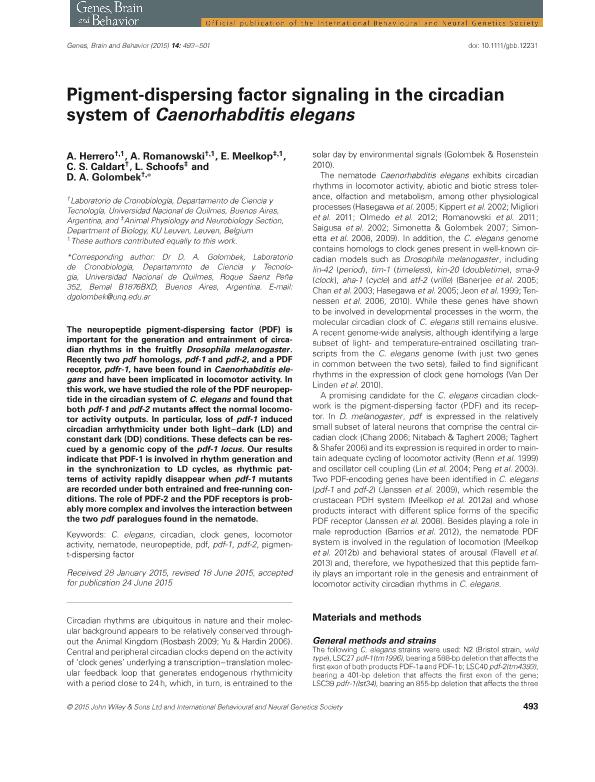Artículo
Pigment-dispersing factor signaling in the circadian system of Caenorhabditis elegans
Fecha de publicación:
07/2015
Editorial:
Wiley Blackwell Publishing, Inc
Revista:
Genes, Brain and Behavior
ISSN:
1601-1848
Idioma:
Inglés
Tipo de recurso:
Artículo publicado
Clasificación temática:
Resumen
The neuropeptide pigment-dispersing factor (PDF) is important for the generation and entrainment of circadian rhythms in the fruitfly Drosophila melanogaster. Recently two pdf homologs, pdf-1 and pdf-2, and a PDF receptor, pdfr-1, have been found in Caenorhabditis elegans and have been implicated in locomotor activity. In this work, we have studied the role of the PDF neuropeptide in the circadian system of C. elegans and found that both pdf-1 and pdf-2 mutants affect the normal locomotor activity outputs. In particular, loss of pdf-1 induced circadian arrhythmicity under both light-dark (LD) and constant dark (DD) conditions. These defects can be rescued by a genomic copy of the pdf-1 locus. Our results indicate that PDF-1 is involved in rhythm generation and in the synchronization to LD cycles, as rhythmic patterns of activity rapidly disappear when pdf-1 mutants are recorded under both entrained and free-running conditions. The role of PDF-2 and the PDF receptors is probably more complex and involves the interaction between the two pdf paralogues found in the nematode.
Archivos asociados
Licencia
Identificadores
Colecciones
Articulos(SEDE CENTRAL)
Articulos de SEDE CENTRAL
Articulos de SEDE CENTRAL
Citación
Herrero, A.; Romanowski, A.; Meelkop, E.; Caldart, C.s.; Schoofs, L.; et al.; Pigment-dispersing factor signaling in the circadian system of Caenorhabditis elegans; Wiley Blackwell Publishing, Inc; Genes, Brain and Behavior; 14; 6; 7-2015; 493-501
Compartir
Altmétricas




